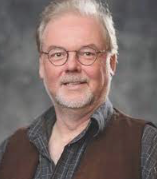This is the intriguing title of Stuart Orme’s talk at our meeting on Friday, 9th September at 7.30 pm. He is always an entertaining speaker and promises, in his own words, “a thought-provoking and naughty view of the past!”
The event will be held in the main hall of the Community Centre in Market Deeping. Entrance £3 for non-members.
Local history research also reveals untold stories, like an incident at Deeping on 31st January, 1813. It was 5 am when John Palmer drove his horse and wagon through the Market Place on his regular route between Boston and Stamford, transporting goods for local traders. He was a licensed carrier, known to be a diligent man, and to protect their property from potential thieves, he carried a pistol.
On that particular morning he also had two passengers. Sitting beside him was Mrs Parr from Deeping Fen, with a baby in her arms. As they drove along Stamford Road, near the junction with Millfield Road, two men appeared out of the darkness and grabbed the horse’s bridle. Two shots were then fired – but not by John Palmer. Without warning, a third man had fired a pistol ball through Mr Palmer’s left arm. The second shot missed him, but passed so close to Mrs Parr that it scorched her forehead.
The accomplices tried to drag Mr Palmer off his cart, but despite being injured, he managed to draw his own pistol and and threatened to shoot them. The thieves ran off, though one of them returned for a second attempt, before retreating.
It appears they struck again the same day, as during that evening a farmer from Braceborough was stopped by three men near Lolham bridges and robbed of twelve shillings.
In an era with no professional police force, victims of violent crime were entitled to raise Hue and Cry, advertising a reward of £40 to anyone who apprehended the offenders. In addition to that statutory amount, John Palmer offered ten guineas of his own money.
It was said that his attackers were dressed like farmers, and the previous evening, men of that description had asked a local toll bar keeper what time John Palmer was likely to pass through. Suspicion fell on three men who had spent most of that Sunday in a Market Deeping inn, but no convictions were ever made.
As well as being a carrier, John Palmer was landlord of The Royal Oak pub in St Leonard’s Street, Stamford, but had retired from both occupations by the time he died twenty-five years later. His passengers are believed to have been Hannah Parr, a farmer’s wife, and her daughter of the same name, who was nine months old. Mrs Parr gave birth to five more children, before dying in her early forties. Baby Hannah lived to be eighty-nine years old.



